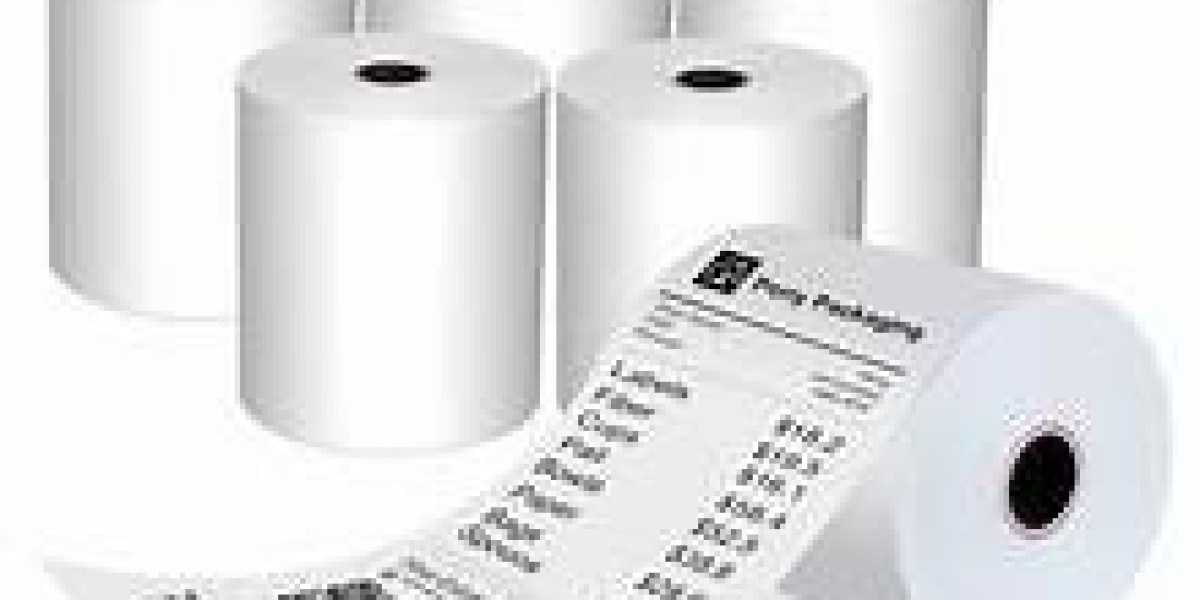Introduction
In the world of receipts, tickets, and labels, one printing material remains essential—thermal paper. This specially coated paper reacts to heat, making it ideal for producing clear prints without the need for ink or toner. It is a preferred choice for point-of-sale (POS) systems, ATMs, parking meters, and even medical devices. Businesses across retail, finance, healthcare, and transportation depend on thermal paper for its speed, clarity, and cost efficiency. Understanding how it works and where it’s used can help you choose the right type for your specific needs.
How Thermal Paper Works and Why It’s Different
Thermal paper is designed with a heat-sensitive coating that changes color when exposed to a printer’s heated elements. This printing method eliminates the need for cartridges, ribbons, or external ink supplies, resulting in a faster and cleaner process.
Layers of Thermal Paper
Base Paper – Provides structural strength and flexibility.
Thermal Coating – A chemical layer that reacts to heat, creating sharp, dark images or text.
Protective Top Layer – Optional coating that resists moisture, oil, UV light, and fading.
The Printing Process
When the printhead in a thermal printer applies heat to specific areas of the paper, the coating instantly changes color, usually black, to form the image or text. This process is quick, quiet, and produces high-contrast prints suitable for barcodes, receipts, and labels.
Because the process requires no ink and has fewer moving parts than traditional printers, thermal printing is both economical and low-maintenance.
Benefits of Thermal Paper for Businesses
Thermal paper offers far more than just the ability to print—it delivers practical advantages that improve efficiency and lower costs for a wide range of industries.
1. Speed and Efficiency
Thermal printers work at high speeds, producing receipts or tickets in seconds. This is especially important in high-volume environments like supermarkets, fast-food chains, and busy transportation hubs.
2. Reduced Maintenance Costs
Without ink or toner to replace, the only recurring cost is the paper itself. This makes thermal printing a budget-friendly choice over time.
3. Superior Print Quality
Thermal paper produces sharp, smudge-free prints that are easy to read, even for small text or barcodes. This accuracy is critical for scanning and record-keeping.
4. Reliability and Durability
Thermal printers have fewer mechanical components, which means fewer breakdowns and less downtime.
5. Versatility of Applications
Available in multiple widths, thicknesses, and coatings, thermal paper is suitable for retail receipts, shipping labels, parking tickets, and more.
6. Eco-Friendly Options
Modern thermal papers are often BPA-free and can be recycled, reducing environmental impact.
By combining speed, clarity, and cost-effectiveness, thermal paper meets the demands of fast-paced businesses that require dependable printing.
For more information you can also visit to pos software price in pakistan
Where Thermal Paper is Used – Industry Applications
Thermal paper’s unique properties make it an essential material in several industries. Its speed, accuracy, and durability support daily operations in a variety of settings.
Retail and Hospitality
From grocery stores to restaurants, POS systems use thermal paper for quick, accurate receipts, ensuring a smooth checkout process for customers.
Banking and Finance
ATMs and teller stations rely on thermal printing for transaction slips, offering security and reliability in financial records.
Medical and Healthcare
Thermal paper is used in ECG machines, prescription labeling, and other medical devices that require precise and durable printouts.
Transportation and Logistics
Airlines, shipping companies, and logistics providers use thermal paper for boarding passes, tracking labels, and delivery receipts.
Events and Ticketing
Concerts, theaters, and sporting events rely on thermal tickets that can be printed quickly and resist smudging during handling.
Parking and Toll Systems
Parking machines and toll booths print tickets instantly, keeping traffic moving smoothly.
These varied applications show how thermal paper supports efficiency across multiple industries.
Choosing the Right Thermal Paper for Your Needs
Selecting the right thermal paper can improve printing performance, reduce costs, and extend the life of your equipment.
Paper Dimensions
Match the width and roll size to your printer model—common POS widths include 57mm and 80mm.
Environmental Standards
Opt for BPA-free or phenol-free thermal paper for safer handling and eco-friendliness.
Supplier Quality
Work with trusted suppliers to ensure consistent paper quality. Low-grade paper can damage printer heads and cause poor print quality.
Balancing Price and Quality
While cheaper options may be tempting, higher-quality thermal paper reduces maintenance issues and ensures customer satisfaction.
Making the right choice ensures clear, lasting prints and keeps your operations running smoothly.
Final Thoughts
Thermal paper is more than just a printing medium—it’s a core part of many industries that depend on speed, clarity, and reliability. By eliminating the need for ink, offering sharp print quality, and providing a variety of formats, thermal paper delivers practical benefits that help businesses run efficiently. Choosing the right type for your application can enhance your operations, lower costs, and ensure consistent, high-quality printing for years to come.
For further articles you can visit here








